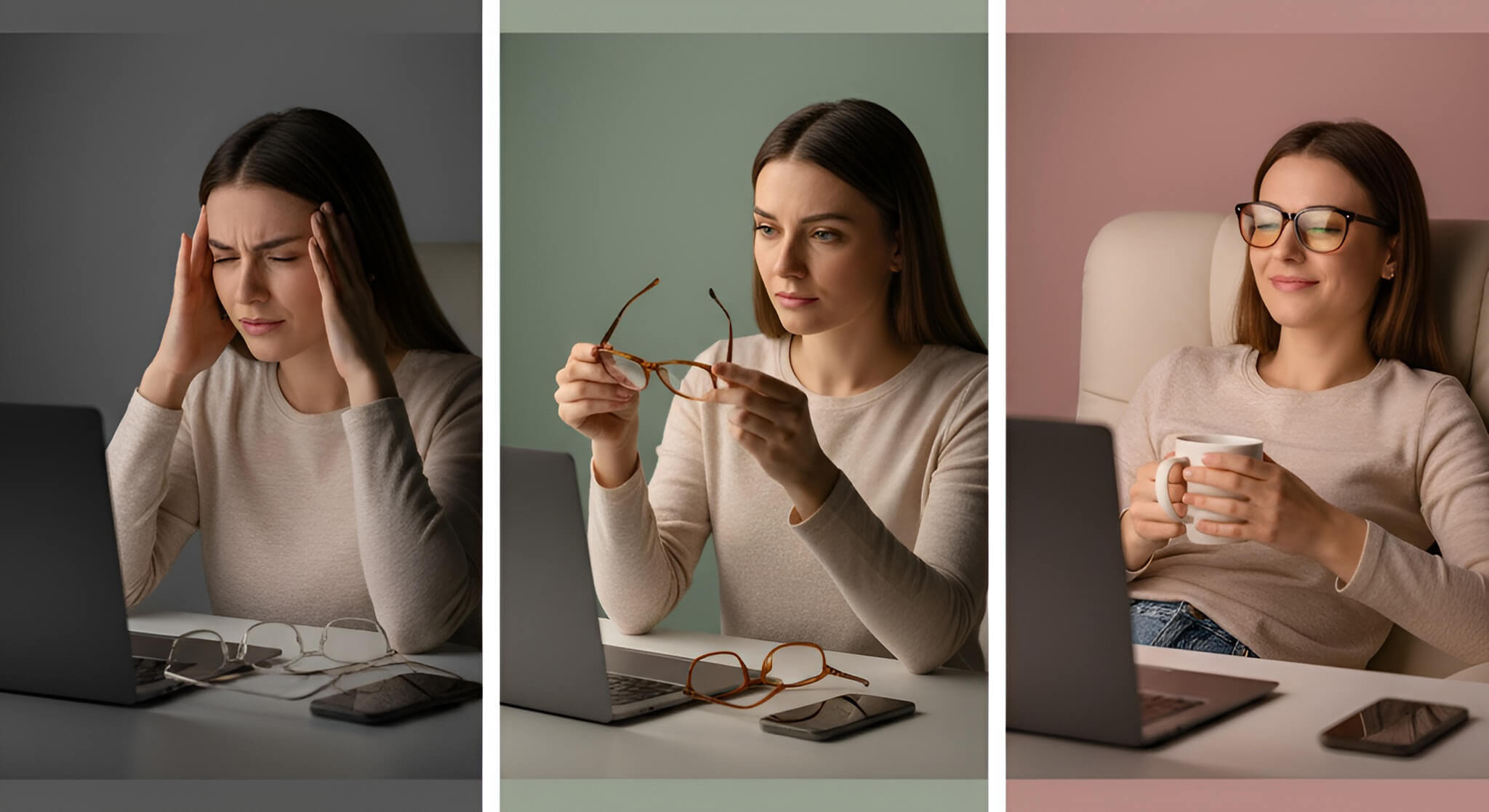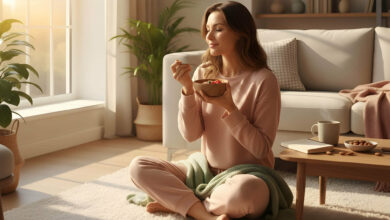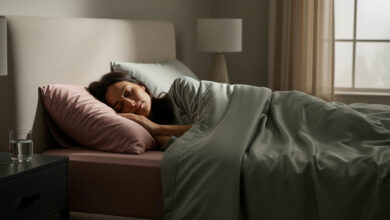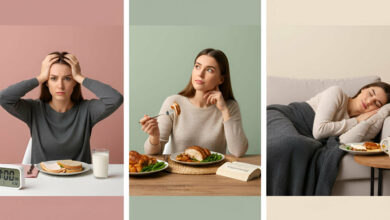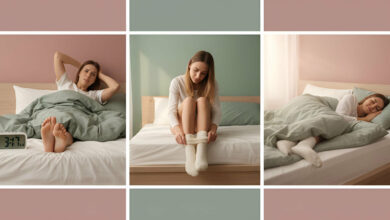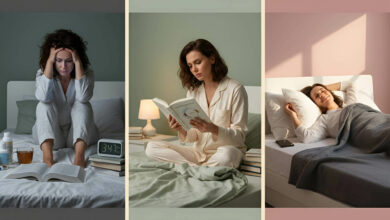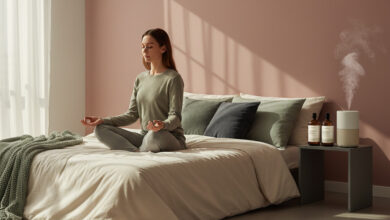Ranking the Best Blue-Light-Blocking Glasses for Evening Use
Table of contents
The Hidden “Wake-Up” Signal That’s Sabotaging Your Sleep
The workday is over, but the screen time isn’t. We unwind by scrolling on our phones, watching our favorite shows, or reading on a tablet. But the bright blue light emitted from these devices is sending a powerful, and biologically confusing, signal to our brains: “It’s still daytime. Stay awake!” This blue light exposure after dark is scientifically proven to suppress your body’s production of melatonin, the crucial hormone that signals it’s time for deep sleep, primarily by activating the melanopsin photoreceptors in the eye. For many of us, this is a primary driver of modern insomnia and poor sleep quality.
This blue light exposure after dark is scientifically proven to suppress your body’s production of melatonin, the crucial hormone that signals it’s time for deep sleep. For many of us, this is a primary driver of modern insomnia and poor sleep quality.
One of the most effective, science-backed tools to combat this is a pair of blue-light-blocking glasses. But here’s the secret that most brands won’t tell you: not all “computer glasses” are created equal. In fact, most of them are not effective for sleep at all. We’re ranking the different types of lenses to show you what actually works.
The Science: The Color of the Lens is Everything
The effectiveness of blue-light-blocking glasses is measured by one simple thing: what percentage of the blue (and sometimes green) light spectrum they filter out before it reaches your eyes. This is directly correlated with the color and tint of the lens. To protect your sleep, you must block the specific wavelengths that tell your brain it’s still daytime.
The Ranking: From “Daytime” Lenses to True “Sleep Glasses”
This is a clear “Good, Better, Best” ranking for the specific goal of improving your sleep.
#3 The “Digital Eye Strain” Lens: Clear Lenses
- The Technology: These are the most common “computer glasses” you’ll find online. They have a virtually clear lens with a coating that is designed to block a very small portion of the blue light spectrum, typically only 15-30%.
- The Verdict for Sleep: NOT EFFECTIVE FOR SLEEP. While these may help some people with digital eye strain and headaches during the day, they do not block nearly enough of the melatonin-suppressing blue light to have a meaningful impact on your sleep cycle. Do not rely on clear lenses as part of your sleep-focused night routine.
#2 The “Wind-Down” Lens: Yellow/Amber Lenses
- The Technology: These lenses have a noticeable yellow or amber tint and represent a significant step up in power. They are designed to block 50-70% or more of the blue light spectrum.
- The Verdict for Sleep: GOOD FOR EARLY EVENING USE. These are a great option for the “wind-down” hours after dinner. They reduce a significant amount of blue light while still allowing you to see colors with relative clarity for cooking, reading, or watching TV. They are a good compromise for transitioning into a relaxed state.
#1 The “Maximum Protection” Lens: Red/Orange Lenses
- The Technology: These are true “sleep glasses,” and they mean business. Their deep orange or red lenses are specifically designed to block 99-100% of both blue and green light, the two wavelengths that have been shown to be the most disruptive to melatonin production.
- The Verdict for Sleep: THE UNDISPUTED CHAMPION. For the 1-2 hours immediately before you want to fall asleep, these are the most scientifically effective tool you can use. They will significantly alter your color perception (the world will look warm and reddish), but they provide the maximum possible protection for your natural sleep cycle, signaling to your brain that it is time to rest.
The At-a-Glance Comparison Table
| Lens Type | % Blue Light Blocked (Approx.) | Best Use Case | Impact on Color Perception |
| Clear | Low (15-30%) | Daytime Eye Strain | Minimal |
| Yellow/Amber | Medium (50-70%+) | Early Evening “Wind-Down” | Moderate |
| Red/Orange | Very High (99-100%) | 1-2 Hours Before Bed | High / Significant |
The Verdict: Your Most Powerful Tool for a Modern Night Routine
When your goal is to specifically improve sleep quality and fight insomnia, the choice is clear. The effectiveness of blue-light-blocking glasses is directly tied to how much of the blue spectrum they block, which means a visible, warm-toned tint is non-negotiable.
Investing in a pair of high-quality yellow/amber lenses for the early evening and a pair of red/orange lenses for the hour before bed is a powerful, science-backed strategy. It’s a simple tool that can have a profound impact on your ability to fall asleep, achieve restorative deep sleep, and support your overall stress & health in our screen-filled world.
This science-backed strategy makes these glasses a key tool for a modern night routine. This visual protection pairs perfectly with auditory tools designed for the same goal, which is why many also seek out The Best Audio Apps for Bedtime Stories and Relaxation to complete their wind-down ritual.
